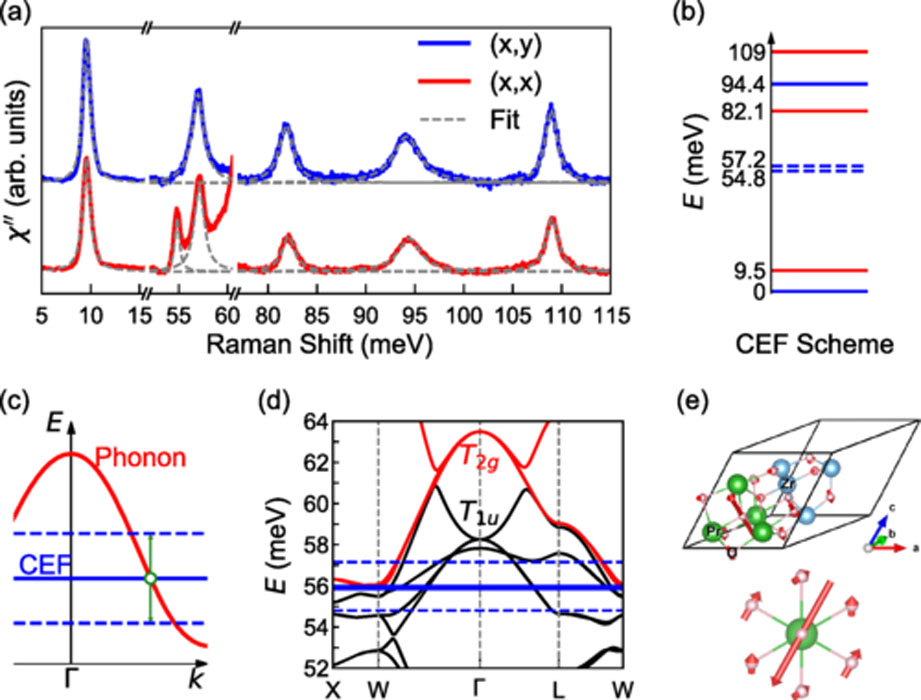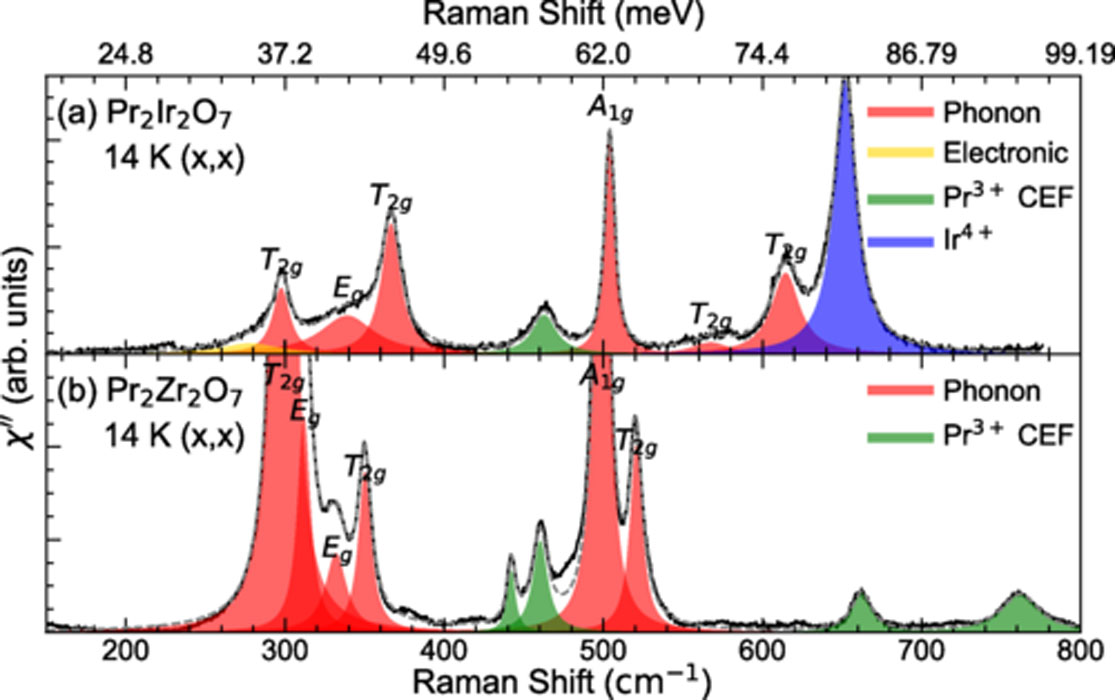Phonon Spectrum of Quantum Pyrochlores Pr2Zr2O7 and Pr2Ir2O7
Nakatsuji Group
Experimental realization of a quantum spin liquid (QSL) state is among the central topics of condensed matter physics. In a QSL state, spins do not form long-range order even down to absolute zero, characterized by strong long-range entanglement[1]. Geometric frustrations and competing interactions are central ingredients to realizing QSL states. However, almost all candidate materials discovered possess chemical or structural disorders. Thus, it is crucial to understand the role of structural disorders. Can structural disorder be a factor that stabilizes a QSL state, as proposed in some theoretical studies [2]? How to experimentally distinguish the effects of structural disorders from that induced by the intrinsic lattice dynamics?
To answer these questions, we performed Raman scattering spectroscopy to separate dynamic lattice effects from the structural disorders on the Pr-based pyrochlore oxides Pr2Zr2O7 and Pr2Ir2O7[3,4]. Both materials host exotic ground states without long-range orders. Their CEF ground state is an Eg non-Kramers doublet, which is unprotected by the time-reversal symmetry and thus can be split by a slight deviation from the D3d local symmetry. As a result, structural disorders may play an essential role in shaping the ground-state properties of both systems.
Our Raman studies reveal that splitting of the ground state Eg doublet and the Eg doublet at 55 meV results from different physical origins [3]. Figures 1(a) and (b) show the Raman spectra of CEF excitation and the CEF level scheme of Pr2Zr2O7 at 14 K, respectively. The Eg level at 55 meV is split by the T2g phonons instead of structural disorder. The observed splitting characterized by a well-defined symmetry can only occur in the presence of mixing with another excitation of E symmetry, leading to a vibronic state (Fig. 1(c)). Based on DFT calculations, the vibronic state in Pr2Zr2O7 is most likely driven by T2g phonon lying at 64.6 meV at the Γ point (Fig. 1(d)). The associated eigenvectors involve motion of O1 oxygens that modulates the Pr3+ oxygen environment (Fig. 1(e)).

Fig. 1. (a) Raman spectra of Pr2Zr2O7 at 14 K. (b) A schematic diagram of the Pr3+ CEF levels in Pr2Zr2O7. (c) A schematic diagram of the vibronic coupling between the phonons and CEF states. (d) The Pr2Zr2O7 phonon dispersion obtained by DFT calculations. The energy range close to the vibronic features is shown. Dashed blue lines represent the experimentally observed CEF vibronic excitations. The vibronic coupling is expected to occur at the intersection point of the nonsplit CEF doublet (solid blue line) and the T2g phonon branch (red curve). (e) Atomic displacements of the T2g phonon mode. Upper panel: View of the unit cell. Lower panel: PrO8 octahedron site viewed from the [111] direction.
Our second study [4] reveals that Pr2Zr2O7 exhibits phonon softening, which modulates the Pr-O-Pr angle and changes the magnetic super-exchange interaction. Compared to Pr2Zr2O7, Pr2Ir2O7 shows a similar but much broader phonon spectrum (Fig. 2). Given that the metallic Pr2Ir2O7 features phonon-electron scattering mechanisms, which are absent in the insulating Pr2Zr2O7, the difference in their phonon spectrum is likely a result of phonon-electron scattering rather than disorders.
References
- [1] P.W. Anderson, Mat. Res. Bull. 8, 153 (1973).
- [2] L. Savary and L. Balents, Phys. Rev. Lett. 118, 087203 (2017).
- [3] Y. Xu, H. Man, N. Tang, T. Ohtsuki, S. Baidya, S. Nakatsuji, D. Vanderbilt, and N. Drichko, Phys. Rev. B 89, 075137 (2022).
- [4] Y. Xu, H. Man, N. Tang, S. Baidya, H. Zhang, S. Nakatsuji, D. Vanderbilt, and N. Drichko, Phys. Rev. B 104, 075125 (2021).

